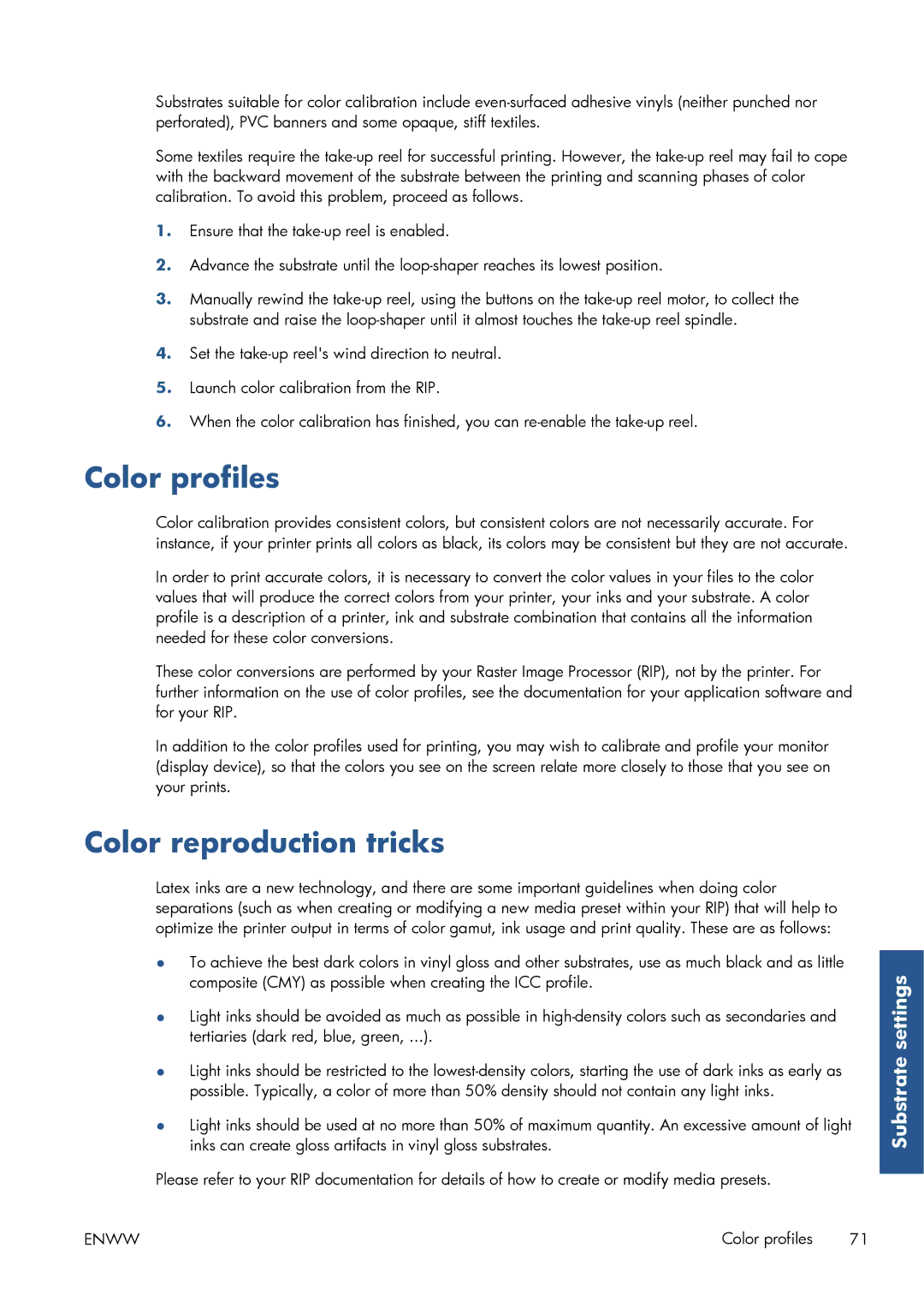Substrates suitable for color calibration include
Some textiles require the
1.Ensure that the
2.Advance the substrate until the
3.Manually rewind the
4.Set the
5.Launch color calibration from the RIP.
6.When the color calibration has finished, you can
Color profiles
Color calibration provides consistent colors, but consistent colors are not necessarily accurate. For instance, if your printer prints all colors as black, its colors may be consistent but they are not accurate.
In order to print accurate colors, it is necessary to convert the color values in your files to the color values that will produce the correct colors from your printer, your inks and your substrate. A color profile is a description of a printer, ink and substrate combination that contains all the information needed for these color conversions.
These color conversions are performed by your Raster Image Processor (RIP), not by the printer. For further information on the use of color profiles, see the documentation for your application software and for your RIP.
In addition to the color profiles used for printing, you may wish to calibrate and profile your monitor (display device), so that the colors you see on the screen relate more closely to those that you see on your prints.
Color reproduction tricks
Latex inks are a new technology, and there are some important guidelines when doing color separations (such as when creating or modifying a new media preset within your RIP) that will help to optimize the printer output in terms of color gamut, ink usage and print quality. These are as follows:
●To achieve the best dark colors in vinyl gloss and other substrates, use as much black and as little composite (CMY) as possible when creating the ICC profile.
●Light inks should be avoided as much as possible in
●Light inks should be restricted to the
●Light inks should be used at no more than 50% of maximum quantity. An excessive amount of light inks can create gloss artifacts in vinyl gloss substrates.
Please refer to your RIP documentation for details of how to create or modify media presets.
Substrate settings
ENWW | Color profiles 71 |
